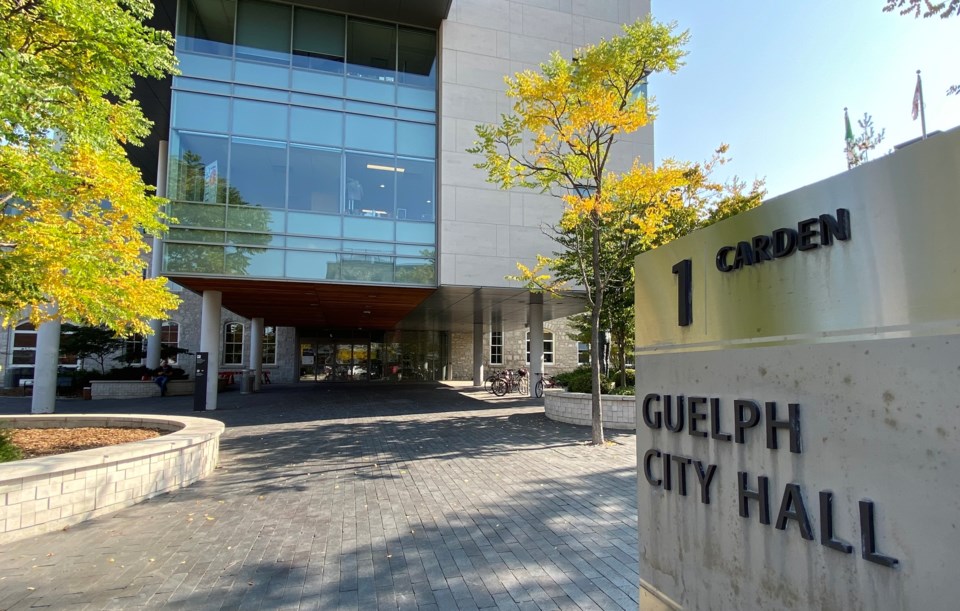In the semi-autobiographical musical Tick, Tick… Boom! there’s a moment where Jonathan Larson, the man who would go on to create the blockbuster Broadway show Rent, is having an existential meltdown about nearly being 30, and having not yet written a career-making hit.
His friend Michael then asks him a simple but clarifying question: "Are you letting yourself be led by fear or by love?"
Laron knows exactly what his issue is: “Fear!”
I was thinking about this scene as I sat down the morning after the budget vote to write this column, because council seemed like it was definitely being led by fear in that debate; fear about passing an unusually high levy increase and fear about cutting or delaying something in order to bring that levy down.
Of course, those twin fears were the main drivers of this year’s budget predicament. Fear of going too high too fast has forced projects to be delayed for years, sometimes decades. That institutional knowledge makes some on council fearful about repeating past mistakes.
Then there’s the fear of appearances. In a world where people don’t really read past the headline, councillors are worried about getting hammered over the number without any discussion about the context. The number doesn’t tell the whole story, but the story also doesn’t fit the narrative: Any increase is wasteful spending and council only thinks of its residents as ATMs.
To quote another recent movie: “Fear is the mind killer.” So let us rule ourselves by talking candidly about the budget, and how it was decided.
First, let me take a victory lap about the tremendous investment in transit. It seems like November’s meeting on the route review broke council in a profound way after being confronted with their constituents’ cynicism about their commitment on the issue. Now we’re getting the route review, electric buses, a new sliding scale affordable pass and kids under 12 are riding free.
Transit users have been waiting for years to see a commitment like this, which is maybe why there were so many on council who were reticent about extending the timelines for certain big-ticket projects even if it means saving money in the short-term. Is spreading out the Open Spaces Master Plan over 12 years instead of 10 years really such a big deal in the scheme of things?
Apparently, it is. This in spite of the staff’s repeated none-too-subtle nudging that council could control the rate of implementation, which was the biggest and most direct way that council could control the rate of the levy increase. The majority of council either didn’t listen or ignored the advice.
That leave the nickels and dimes, which seems to be all that council can control, or perhaps all that they want to control. There was no bold motion to delay certain big capital projects, or wholesale delay implementation of a project like the Cultural Heritage Action Plan. The biggest of the big tickets council voted on came out to $500,000 each, which accounts for a mere 0.19 per cent change in the levy.
I know some of you reading this are ticked off about the council’s lack of guile. Perhaps you’re of the opinion that that council should have delayed that new library project you hate so much, and that’s fine.
On the other hand, I would note that a couple of Saturdays ago, the elevator at the current main library broke down and effectively barred people with disabilities from having access to the library beyond the first floor, including the accessible washroom.
You may remember that there was a debate at council a few weeks ago about creating greater accessibility to the vote, but it’s part of a bigger issue around accessibility across the city. Many of our buildings were built around the mid-part of the last century when Guelph was little more than a hub for all the surrounding farm communities. In 20 years, Guelph will be a city of more than 200,000 people.
In other words, there’s been a lot of changes in the last 60 or 70 years, but our mid-century thinking is not only reflected in our buildings, it’s reflected in our funding.
Why do we still stifle our cities with such limited funding options while forcing them to pick up more of the slack? Our neighbourhood groups are feeding people, our public health orgs are now in the housing business, and the residents of Guelph have to pay taxes to both the city and the province to fund the hospital’s expansion.
We’re going into another double election year, provincial and municipal, and that seems like the perfect time to talk about how we fund our cities and why. Why are the upper levels of government allowed to dump so much on municipalities who have limited resources and are legally bared from running deficits? Why is no one talking about updating the heads-in-beds levy after nearly 40 years, for example?
Of course, resolving these problems don’t anything for us right now. For 2022, it looks like fear wins. Can’t wait for 2023.
